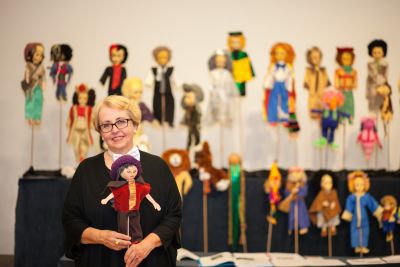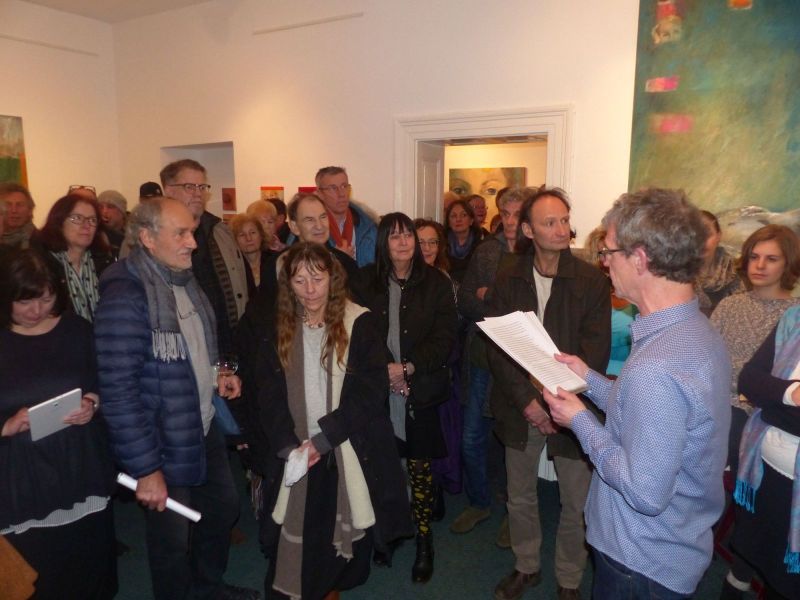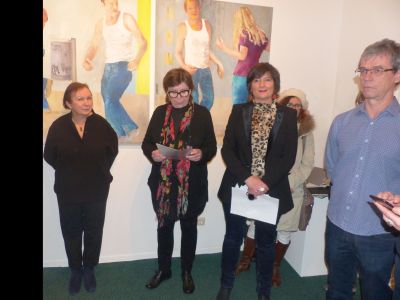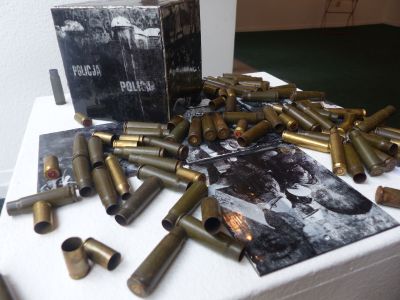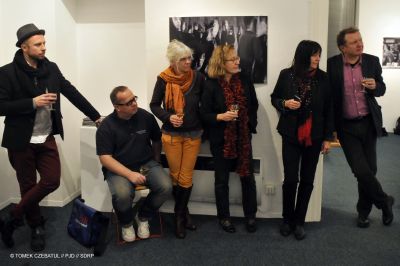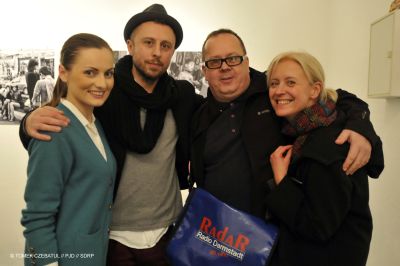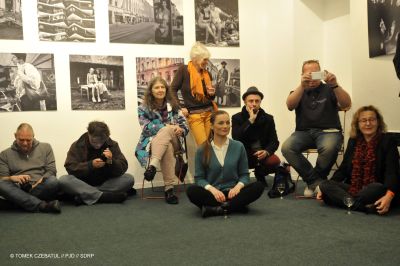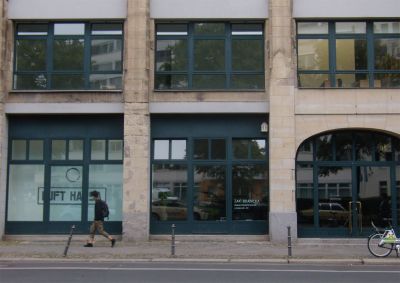“PoKuSa” – gallery for contemporary Polish art in Wiesbaden
Mediathek Sorted

The seeds for the “PoKuSa” gallery were sown thanks to the passionate commitment and hard work of Sibylle von Oppeln-Bronikowski, who had founded the art gallery “Privatgalerie” in Albrechtstrasse 40 in Wiesbaden in 1996. She managed the gallery by herself for the first five challenging years. However, in time, it became increasingly difficult to balance running the gallery with her daytime job in the Federal Statistical Office. Originally, Sibylle von Oppeln-Bronikowski had no ties with Poland. However, following the success of the exhibition she organised of the Wrocław artist Eugeniusz Józefowski, now a professor at the Academy of Fine Arts in Wrocław, she developed a greater interest in artists from Poland. She quickly found a site for the future gallery. Small, high-ceilinged rooms on the ground floor of a building with large windows, close to the train station, made for an ideal space for her vision. The opening events and exhibitions attracted an increasing number of visitors to the gallery.
Gallery founders
In 2001, Sibylle von Oppeln-Bronikowski handed over the gallery to the “Polnischer Kultursalon” (or “PoKuSa”) association, which had just been founded. She became the association’s chairperson. The founding members, who came from Poland and Germany, had personal and professional connections to the art world and were able to forge important contacts with the Polish art scene. The first curators of the gallery were Ewa Hartmann, Gerhard Fehrer and Barbara Ahlfeldt. Ewa Hartmann, an art teacher from Wrocław, has lived in Wiesbaden since 1987, where she works in an educational institution. She joined the gallery after visiting an opening event for an exhibition by Eugeniusz Józefowski, one of her professors from Wrocław.[1] Barbara Ahlfeldt, who originally came from Warsaw, settled in Wiesbaden after completing her studies at the Academy of Fine Arts in Paris and Rio de Janerio. Gerhard Fehrer, a great music, opera and art enthusiast who died in 2013, developed his relationship with Poland through his Polish wife. As the years went by, the individual members of the association played a more or less active role, depending on their life circumstances. “The people who are active in the Polnischer Kultursalon have professional lives of their own and dedicate a great deal of their free time to promoting Polish art”, Barbara Cöllen, editor of Deutsche Welle, explained in 2009 after visiting Wiesbaden.[2]
For many years, Ewa Hartmann has been supported in her curatorial and organisational work by Elisabeth Springer-Heinze, a physician and artist from Wiesbaden, who now also organises solo exhibitions. Dr. Michael Grus, a respected academic at the Goethe-Haus in Frankfurt, is the treasurer of the gallery and the association, and is responsible for finding sponsors.
The gallery is also supported by its hard-working members of the board. They include Barbara Buss, who collaborates with the “GoEast” film festival in Wiesbaden, and the artist Barbara Ahlfeldt, who acts as artistic adviser to the gallery. The sudden death of Gerhard Fehrer in 2013 was a major loss for the association’s founders. He had not only curated a number of different exhibitions in the “PoKuSa”, but was also actively involved in further developing the city partnership between Wiesbaden and Wrocław; he was a passionate campaigner for art and a close friend. The work of the “PoKuSa” gallery consists of the curation of art shows on the one hand, and the voluntary activities of its members on the other. As Ewa Hartmann explains in an interview with “Porta Polonica”: “I am the curator, the ambassador as it were for Polish artists and art in the city and the region – but the gallery is the entire team! Without the effort put in by all our members, the gallery would not be possible”. For more than 20 years, the “PoKuSa” has not only steadily continued to develop, but has also retained its independence. Today, the association has 30 members , while the community that has grown around it is far larger.
The artists
Right from the start, the “PoKuSa” gallery set the bar very high. It supports young talent and accompanies the artists it shows on their creative journey. Some of them, such as Eugeniusz Józefowski, Norman Smużniak oder Zdzisław Nitka regularly return to Wiesbaden with their new series of works. Norman Smużniak has shown his works seven times since the gallery opened 20 years ago. It says something about the nature of the gallery that today, these artists are professors at the Academy of Fine Arts in Wrocław and that they send their best graduates there. One reflection of the success of “PoKuSa” is that a work by Zdzisław Nitka is now part of the permanent exhibition in the National Museum in Wrocław.
The curator Ewa Hartmann is proud of the gallery’s collaboration with the most talented young artists from important cultural centres in Poland. For the gallery, the most important axes of artistic exchange are the Academy of Fine Arts in Wrocław and the Academy of Fine Arts in Poznań, as well as numerous independent artists from throughout the country. It is no coincidence that young, aspiring artists with international awards choose to show their work in the “PoKuSa”.

